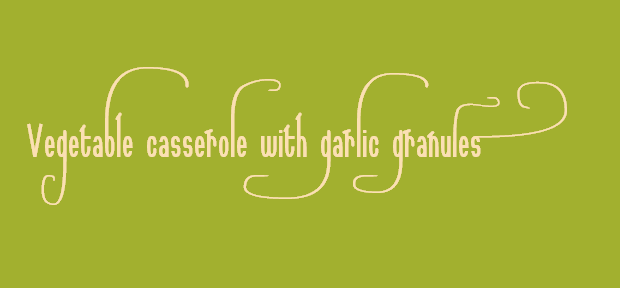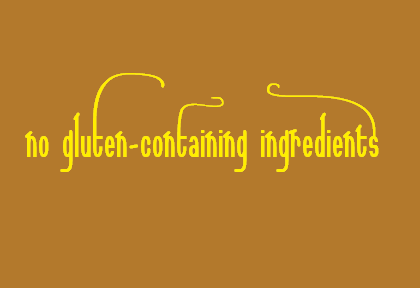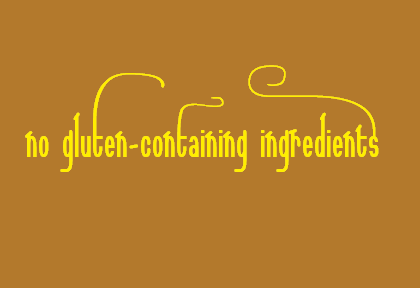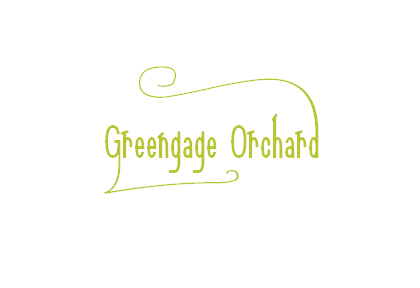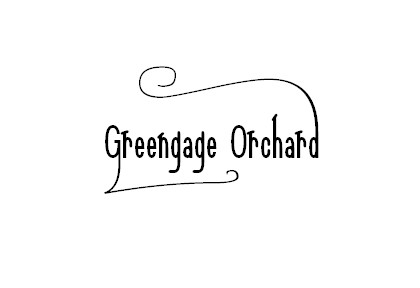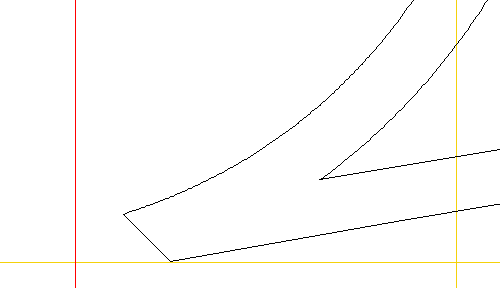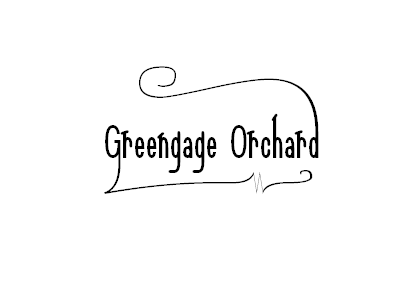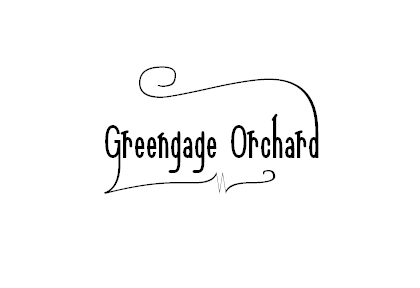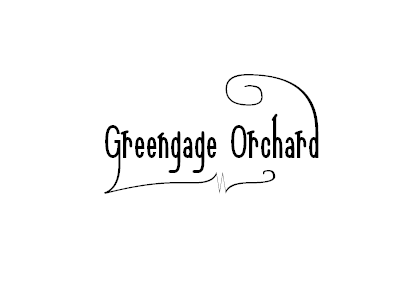Some readers may remember that I have used the Sonnet Calligraphic font in a title when producing a pdf of some text that I had written about food.
Last Saturday I was thinking about writing some text about using garlic granules in a vegetable casserole, and, thinking that I might try to produce a pdf of the text, I wondered if, following on from the success of making the calligraphic end of word o for the tangerine tango mini-project, whether I could make a calligraphic end of word s for use in the phrase garlic granules in the title of the text that I was thinking about writing.
While fontmaking I added two other glyphs at the same time, both of which are used in the finished example.
Here is some transcript.
Saturday 7 January 2012
16:34
Open SONNC037.TTF.
Save as SONNC038.TTF.
Use Tools AutoNaming… so as to adjust the name and date.
Also, update the copyright notices to 2012.
As the calligraphic end of phrase o was successful, try to produce a calligraphic end of phrase s to use in garlic granules
Add a glyph at U+E6AE Alt 59054.
Copy the glyph of U+E6AC.
Add a glyph at U+E6AF Alt 59055
Copy the glyph at U+E5E2, which is a lowercase l with a calligraphic swash.
Try to make a calligraphic b for use in vegetable casserole.
Try to make the calligraphic sweep slightly different from that of the lowercase l
Add a glyph at U+E6B0 Alt 59056
Copy the glyph at U+E5C4, which is a g with a long vertical.
Try to make a wider version that goes back under the previous character for use in the word vegetable.
Font saved at 17:35:06
Here is the text using calligraphic glyphs, using various Private Use Area characters to encode the calligraphic glyphs. If copied onto the clipboard and pasted into WordPad and then formatted using the Sonnet Calligraphic 038 font at 72 point, the result should be displayed.
Veetale casseroe with aric ranue
I am not a pen and ink calligrapher and I have no formal training in how to produce calligraphic designs, so what I write here is just my own experiences of what I have tried.
The text started as follows.
Vegetable casserole with garlic granules
I regarded that as follows.
(Vegetable casserole) with (garlic granules)
I regarded garlic granules as the part of the title that I wanted to emphasise, so I made that more calligraphic. I deliberately did not use calligraphic glyphs within the word with.
In typesetting garlic granules I used the same two calligraphic g glyphs as for tangerine tango, though in the other order. This was initially to avoid an overlap in the display, yet works well, as in tangerine tango, the word tango is emphasised whereas in garlic granules the word garlic is emphasised.
tanerine tan
In making the calligraphic b sweep slightly differently from that of the lowercase l, I was trying to avoid making the result appear too automated. I was trying to give the display a look more as if the title had been drawn directly by pen and ink with the natural slight variation that that may produce, that variation avoiding an effect of noticing that two sweeps are identical.
When I am fontmaking for the Sonnet Calligraphic font I use the Font Test… facility of FontCreator to build up the examples as I proceed.
I make the character in WordPad, within the transcript notes, using an Alt code. This appears as a black rectangle in WordPad as I am using the Arial font within WordPad. I then copy the character onto the clipboard and paste it into the test page of FontCreator. This means that I can try how glyphs display within words as I proceed.
Here is the font.
SONNC038.TTF (43.4 KB)
William Overington
9 January 2012
